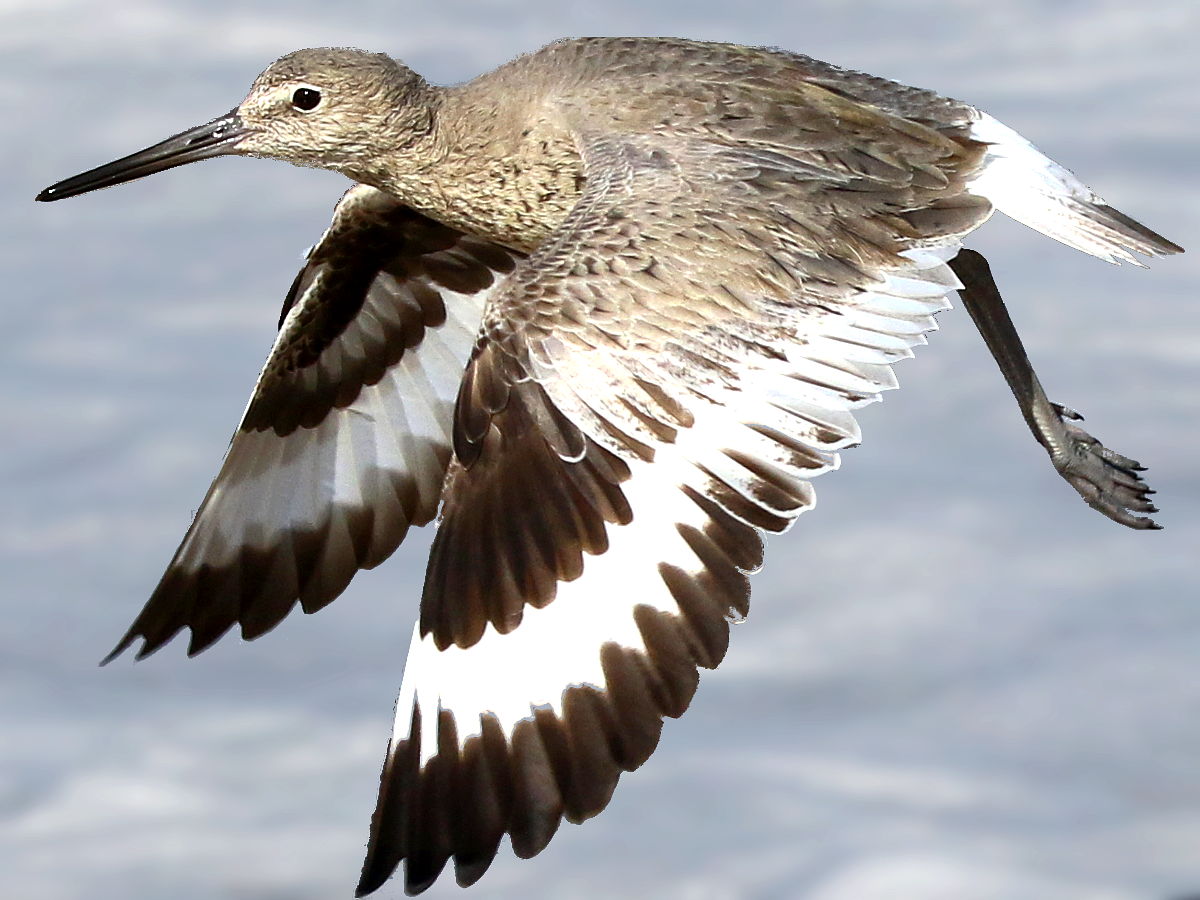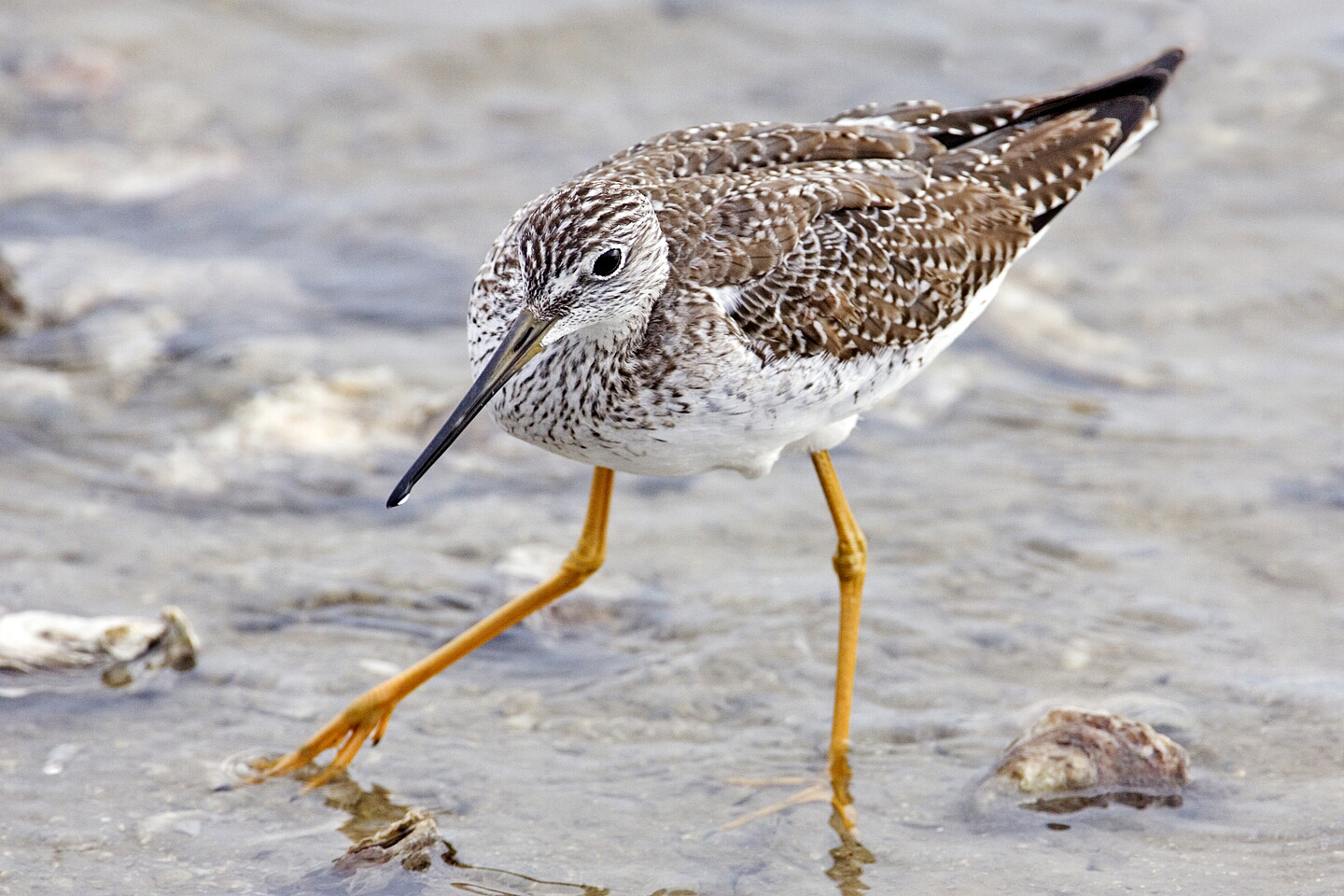|
Lesser Yellowlegs
The lesser yellowlegs (''Tringa flavipes'') is a medium-sized shorebird. It breeds in the boreal forest region of North America. Taxonomy The lesser yellowlegs was formally described in 1789 by the German naturalist Johann Friedrich Gmelin in his revised and expanded edition of Carl Linnaeus's ''Systema Naturae''. He placed it in the genus '' Scolopax'' and coined the binomial name ''Scolopax flavipes''. Gmelin based his description on the "yellow shanks" seen in the province of New York in autumn that had been described in 1785 by both the English ornithologist John Latham and the Welsh naturalist Thomas Pennant. The lesser yellowlegs is now placed in the genus ''Tringa'' that was introduced in 1758 by the Swedish naturalist Carl Linnaeus in the tenth edition of his ''Systema Naturae''. The name ''Tringa'' is the Neo-Latin word given to the green sandpiper by the Italian naturalist Ulisse Aldrovandi in 1603 based on Ancient Greek ''trungas'', a thrush-sized, white-rumped, ta ... [...More Info...] [...Related Items...] OR: [Wikipedia] [Google] [Baidu] |
Johann Friedrich Gmelin
Johann Friedrich Gmelin (8 August 1748 – 1 November 1804) was a German natural history, naturalist, chemist, botanist, entomologist, herpetologist, and malacologist. Education Johann Friedrich Gmelin was born as the eldest son of Philipp Friedrich Gmelin in 1748 in Tübingen. He studied medicine under his father at University of Tübingen and graduated with a Master's degree in 1768, with a thesis entitled: ', defended under the presidency of Ferdinand Christoph Oetinger, whom he thanks with the words '. Career In 1769, Gmelin became an adjunct professor of medicine at University of Tübingen. In 1773, he became professor of philosophy and adjunct professor of medicine at University of Göttingen. He was promoted to full professor of medicine and professor of chemistry, botany, and mineralogy in 1778. He died in 1804 in Göttingen and is buried there in the Albanifriedhof, Albani cemetery with his wife Rosine Louise Gmelin (1755–1828, née Schott). Johann Friedrich Gm ... [...More Info...] [...Related Items...] OR: [Wikipedia] [Google] [Baidu] |
Aristotle
Aristotle (; 384–322 BC) was an Ancient Greek philosophy, Ancient Greek philosopher and polymath. His writings cover a broad range of subjects spanning the natural sciences, philosophy, linguistics, economics, politics, psychology, and the arts. As the founder of the Peripatetic school of philosophy in the Lyceum (classical), Lyceum in Athens, he began the wider Aristotelianism, Aristotelian tradition that followed, which set the groundwork for the development of modern science. Little is known about Aristotle's life. He was born in the city of Stagira (ancient city), Stagira in northern Greece during the Classical Greece, Classical period. His father, Nicomachus (father of Aristotle), Nicomachus, died when Aristotle was a child, and he was brought up by a guardian. At around eighteen years old, he joined Plato's Platonic Academy, Academy in Athens and remained there until the age of thirty seven (). Shortly after Plato died, Aristotle left Athens and, at the request ... [...More Info...] [...Related Items...] OR: [Wikipedia] [Google] [Baidu] |
Caribbean
The Caribbean ( , ; ; ; ) is a region in the middle of the Americas centered around the Caribbean Sea in the Atlantic Ocean, North Atlantic Ocean, mostly overlapping with the West Indies. Bordered by North America to the north, Central America to the west, and South America to the south, it comprises numerous List of Caribbean islands, islands, cays, islets, reefs, and banks. It includes the Lucayan Archipelago, Greater Antilles, and Lesser Antilles of the West Indies; the Quintana Roo Municipalities of Quintana Roo#Municipalities, islands and Districts of Belize#List, Belizean List of islands of Belize, islands of the Yucatán Peninsula; and the Bay Islands Department#Islands, Bay Islands, Miskito Cays, Archipelago of San Andrés, Providencia and Santa Catalina, Archipelago of San Andrés, Providencia, and Santa Catalina, Corn Islands, and San Blas Islands of Central America. It also includes the coastal areas on the Mainland, continental mainland of the Americas bordering the ... [...More Info...] [...Related Items...] OR: [Wikipedia] [Google] [Baidu] |
United States
The United States of America (USA), also known as the United States (U.S.) or America, is a country primarily located in North America. It is a federal republic of 50 U.S. state, states and a federal capital district, Washington, D.C. The 48 contiguous states border Canada to the north and Mexico to the south, with the semi-exclave of Alaska in the northwest and the archipelago of Hawaii in the Pacific Ocean. The United States asserts sovereignty over five Territories of the United States, major island territories and United States Minor Outlying Islands, various uninhabited islands in Oceania and the Caribbean. It is a megadiverse country, with the world's List of countries and dependencies by area, third-largest land area and List of countries and dependencies by population, third-largest population, exceeding 340 million. Its three Metropolitan statistical areas by population, largest metropolitan areas are New York metropolitan area, New York, Greater Los Angeles, Los Angel ... [...More Info...] [...Related Items...] OR: [Wikipedia] [Google] [Baidu] |
Gulf Of Mexico
The Gulf of Mexico () is an oceanic basin and a marginal sea of the Atlantic Ocean, mostly surrounded by the North American continent. It is bounded on the northeast, north, and northwest by the Gulf Coast of the United States; on the southwest and south by the Mexican states of Tamaulipas, Veracruz, Tabasco, Campeche, Yucatán, and Quintana Roo; and on the southeast by Cuba. The coastal areas along the Southern U.S. states of Texas, Louisiana, Mississippi, Alabama, and Florida, which border the Gulf on the north, are occasionally referred to as the "Third Coast" of the United States (in addition to its Atlantic and Pacific coasts), but more often as "the Gulf Coast". The Gulf of Mexico took shape about 300 million years ago (mya) as a result of plate tectonics. The Gulf of Mexico basin is roughly oval and is about wide. Its floor consists of sedimentary rocks and recent sediments. It is connected to part of the Atlantic Ocean through the Straits of Florida between the ... [...More Info...] [...Related Items...] OR: [Wikipedia] [Google] [Baidu] |
Bird Migration
Bird migration is a seasonal movement of birds between breeding and wintering grounds that occurs twice a year. It is typically from north to south or from south to north. Animal migration, Migration is inherently risky, due to predation and mortality. The Arctic tern holds the long-distance migration record for birds, travelling between Arctic breeding grounds and the Antarctic each year. Some species of Procellariiformes, tubenoses, such as albatrosses, circle the Earth, flying over the southern oceans, while others such as Manx shearwaters migrate between their northern breeding grounds and the southern ocean. Shorter migrations are common, while longer ones are not. The shorter migrations include altitudinal migrations on mountains, including the Andes and Himalayas. The timing of migration seems to be controlled primarily by changes in day length. Migrating birds navigate using celestial cues from the Sun and stars, the Earth's magnetic field, and mental maps. Histor ... [...More Info...] [...Related Items...] OR: [Wikipedia] [Google] [Baidu] |
The Condor (journal)
''Ornithological Applications'', formerly ''The Condor'' and ''The Condor: Ornithological Applications'', is a peer-reviewed quarterly scientific journal covering ornithology. It is an official journal of the American Ornithological Society. History The journal was first published in 1899 as the ''Bulletin of the Cooper Ornithological Club'' by the Cooper Ornithological Club (later Cooper Ornithological Society), a California-based ornithological society. In 1900, the journal was renamed as ''The Condor''. It published ornithological research, and through the 1950s, its scope was regional, focusing on the western United States. An editorial board was established in 1951 to address increasing submissions to the journal. James R. King, editor-in-chief following 1965, instituted an external peer review system. Moreover, King broadened the journal's geographic scope. By 1966, at least 40% of papers published in ''The Condor'' were written by scientists outside the United States. In ... [...More Info...] [...Related Items...] OR: [Wikipedia] [Google] [Baidu] |
Willet
The willet (''Tringa semipalmata'') is a large shorebird in the family Scolopacidae. It is a relatively large and robust sandpiper and is the largest of the species called "shanks" in the genus ''Tringa''. Its closest relative is the lesser yellowlegs, a much smaller bird with a very different appearance apart from the fine, clear, and dense pattern of the neck, which both species show in breeding plumage. It breeds in North America and the West Indies and winters in southern North America, Central America, the West Indies and South America. Taxonomy The willet was Species description, formally described in 1789 by the German naturalist Johann Friedrich Gmelin in his revised and expanded edition of Carl Linnaeus's ''Systema Naturae''. He placed it in the genus ''Scolopax'' and coined the binomial nomenclature, binomial name ''Scolopax semipalmata''. Gmelin based his description on the "semipalmated snipe" from New York that had been described in 1785 by both the English ornitholo ... [...More Info...] [...Related Items...] OR: [Wikipedia] [Google] [Baidu] |
Greater Yellowlegs
The greater yellowlegs (''Tringa melanoleuca'') is a large shorebird in the family Scolopacidae. It breeds in central Canada and southern Alaska and winters in southern North America, Central America, the West Indies and South America. Taxonomy The greater yellowlegs was formally described in 1789 by the German naturalist Johann Friedrich Gmelin in his revised and expanded edition of Carl Linnaeus's ''Systema Naturae''. He placed it in the genus '' Scolopax'' and coined the binomial name ''Scolopax melanoleuca''. Gmelin based his description on the "stone snipe" seen feeding in autumn in Chateau Bay, Labrador, that had been described in 1785 by both the English ornithologist John Latham and by the Welsh naturalist Thomas Pennant. The greater yellowlegs is now placed in the genus ''Tringa'' that was introduced in 1758 by the Swedish naturalist Carl Linnaeus in the tenth edition of his ''Systema Naturae''. The name ''Tringa'' is the Neo-Latin word given to the green sandpiper b ... [...More Info...] [...Related Items...] OR: [Wikipedia] [Google] [Baidu] |
Lesser And Greater Yellowlegs (96183)
Lesser, from Eliezer (, "Help/Court of my God"), is a surname. Notable people with the surname include: * Adolf Lesser (1851–1926), German physician * Aleksander Lesser (1814–1884), Polish painter and art critic * Anton Lesser (born 1952), British actor * Axel Lesser (born 1946), East German cross country skier * Edmund Lesser (1852–1918), German dermatologist * Erik Lesser (born 1988), German biathlete * Friedrich Christian Lesser (1692–1754), German theologian * Gabriele Lesser (born 1960), German historian and journalist * George Lesser, American musician * Gerald S. Lesser (1926–2010), American psychologist * Henry Lesser (born 1963), German footballer * J Lesser (born 1970), American musician * Len Lesser (1922–2011), American actor * Louis Lesser (1916–2013), American real estate developer * Matt Lesser, Connecticut politician * Mike Lesser (1943–2015), British mathematical philosopher and political activist * Milton Lesser or Stephen Marlowe (1928–2008) ... [...More Info...] [...Related Items...] OR: [Wikipedia] [Google] [Baidu] |





